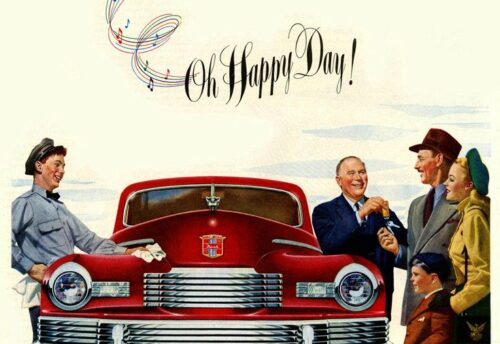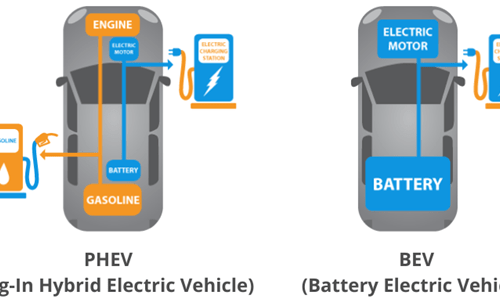Transformations for Legacy Mobility Services Companies
One of the main theses developed in Transportation Transformation is that, though still young, the app-based on-demand mobility services companies will need to transform before they can fully capture the opportunity afforded by new urban mobility. The book presents the decisions such companies must make and a framework that prescribes specific transformations consistent with these decisions. For some, the transformation has already begun. But will these decisions and transformations be equally applicable to legacy on-demand transportation companies and help them compete more effectively against their app-based disruptors in new urban mobility?
I started flying into New York with increasing frequency in the mid-80s. Upon landing in the JFK airport, I would take a taxi to a Manhattan hotel. It took me a few such trips before I realized that I was frequently overcharged while often traveling in a vehicle that left a lot to be desired. I was not alone in this experience; and New York was not the only city where this was, and may still be, happening. As my travels expanded globally, I started to appreciate the taxi experiences in certain cities and dread those in others. Frequent and infrequent travelers can fill books with anecdotes describing their mistreatment by taxi drivers. As I’m sure all other visitors were, I was delighted when New York instituted a flat rate initially for trips from JFK to Manhattan and later in both directions. For that transparency, I was willing to overlook the vehicle’s condition. With their mobile apps, Transportation Network Companies (TNCs) carried this price transparency to the next level. But in addition to estimating the fare associated with a ride to a destination before the ride is ordered, they also provided additional conveniences such as the ordered vehicle’s Estimated Time of Arrival, dynamic pricing, the driver’s rating, and the type of vehicle to be used in the ride. Rider migration to the disruptors didn’t take long. As cities reopen and on-demand rides are rising again, it is a good time to ask what transformations legacy on-demand mobility services companies need to undertake to survive and effectively compete in new urban mobility.
New urban mobility is about the intelligent movement of people and goods using multimodal mobility services and advanced technology vehicles. Its long-term goal is to provide mobility as a service. In the ten years leading to the pandemic, the companies that offered app-based on-demand ride-hailing services for passenger transportation disrupted the legacy taxi, limousine, and car rental competitors. The disruption is broadly attributed to two reasons. First, through a combination of their mobile applications and back-office software, the disruptors offered a particularly compelling user experience that resulted in these modalities acquiring a strong consumer following, though not necessarily brand loyalty. Second, by claiming to be technology platforms rather than transportation providers these companies were able to circumvent the regulations governing taxi and limousine companies. Using their strong capital position, they were able to quickly penetrate markets of interest and offer low, below cost, fares in the process disrupting the complacent taxi companies. How could the legacy on-demand mobility companies compete?
While they have lost significant ground, the legacy companies possess two strengths. First, because they are licensed to operate a certain number of vehicles in each city, as cities constrain the number of vehicles TNCs can operate in their territories and impose additional regulations, these licenses become important assets. Second, by managing their vehicle fleets, in addition to aggregating demand and coordinating rides, as the TNCs also do, the legacy companies possess a body of knowledge that is extremely useful for offering on-demand mobility successfully and profitably. Active fleet management provides them with extensive information on each vehicle’s performance and how it impacts the fleet’s operations. They can use this information to predict when a vehicle needs to be maintained to maximize its uptime and adhere to regulations, how it can be repaired cost-effectively when it needs to be fixed, and when it needs to be replaced to maximize its value to the company. Operating their own fleet also means that the legacy companies exert certain control over each vehicle’s cabin. They understand its state (cleanliness, safety, items left behind), they can monitor the interactions between driver and passenger (passenger and driver safety), etc.
Unfortunately, to date, most legacy mobility services companies focused their TNC response on the first strength but few on the second. However, because regulation typically moves slowly, by the time cities started imposing fleet size and other restrictions on the disruptors, the public had already migrated away from the legacy companies. As a result, the legacy companies’ survival in the short term is at risk, and their ability to participate in new urban mobility is in question. The legacy companies must transform to accomplish two goals: improve the passenger experience and excel in the operation and management of fleets that will include the automated, connected, and electrified (ACE) vehicles being introduced by OEMs.
To improve the customer experience, the first transformation should involve the development of proprietary customer-facing and back-office software technologies rather than the use of third-party software. Several US taxi companies have been using mobile applications such as Curb and Weeve. While the adoption of these applications represents a step in the right direction, the applications are too generic and don’t offer the legacy companies the opportunity to create a brand-specific customer experience in the way Uber and other disruptors have been able to. In New York, there have also been proposals to integrate all ride-hailing providers into a single application. This will be a big mistake for everyone involved. Imagine if the same were to happen in shopping and Amazon, Walmart, and Target were required to receive orders only from a single app, or airlines to book new reservations from a single app. Similar to the customer-facing software, the legacy companies should develop proprietary, rather than license third-party, back-office software that incorporates their unique fleet operation and management expertise, and utilizes the data coming from the new vehicles, enabling them to increase the vehicle’s utilization and uptime. Combined, these two types of software will enable the legacy companies to improve their customer understanding and positively impact the rider experience. They will also need to address the issues leading to driver dissatisfaction which remains a persistent problem leading to a subpar rider experience. The user experience begins with the app but continues in the vehicle’s cabin. As was mentioned above, the consumer move away from taxis was not only due to the conveniences of the apps but also due to the state of the taxis.
To excel in the operation and management of ACE vehicle fleets legacy mobility companies will need to successfully transfer their existing vehicle platform competencies to these new fleets. While today few cities, such as Shanghai and Oslo, use advanced technology vehicles in their taxi fleets, more cities will start requiring from all mobility providers the upgrading of fleets with vehicles that adhere to new environmental and safety standards. Legacy companies must also consider whether it will be important to share their fleet operation and vehicle performance knowledge with vehicle manufacturers to develop purpose-built ACE vehicles, similar to those that Uber and Didi recently announced.
When these transformations are done successfully the legacy company can compete effectively and thrive at least in medium-size cities where TNCs do not have as strong networks. This has been the case with Red Top Cab of Arlington and with the Yellow Cab of Columbus (Ohio). Red Top Cab of Arlington focused primarily on technology transformations and introduced both a consumer-facing mobile application and sophisticated back-office dispatch software. Yellow Cab looked at every aspect of its operation, upgraded its management, acquired advanced technology vehicles, and introduced new customer-facing and back-office software. It also established a close partnership with the city of Columbus.
The transformations discussed require significant investment (see, for example, Uber’s 1Q21 report where the company disclosed that complying with the UK court ruling to provide more pay and benefits to its drivers will cost an additional $600 million), a culture change that emphasizes agility to test various business and operating models, and technology centricity around software and data. This is a lot to ask from companies with old-style corporate cultures, that operate low-margin businesses like on-demand passenger transportation. Car rental companies Hertz and Avis have recently undergone management changes and raised new capital. However, recent technology transformations attempted by both were unsuccessful. Obviously, such failures are not the sole purview of the legacy companies. After making significant investments to develop their own autonomous vehicle technologies to use in robotaxis and in the process become fleet operators, both Uber and Lyft sold their corresponding divisions upon realizing the magnitude of the investment that will be necessary and the period over which they will need to be investing. They both need to adopt robotaxis because driver costs negatively impact their margins.
Therefore, on the one hand, we have legacy companies that need to transform before they can compete with their disruptors, and on the other, we have the disruptors facing the reality of their business models when they can no longer be viewed as technology companies but as regulated transportation providers. I can envision two potential alternatives. First, in large cities where the disruptors are most dominant and show an operating profit, we may see them acquiring legacy mobility companies. The operating permits the legacy companies have, and the fleet operation and management know-how they possess can ultimately become attractive assets for the disruptors to own. We may first see such acquisitions around cities where such regulation has been instituted or is imminent. Second, as TNCs realize that on-demand passenger transportation is a financially unattractive low-margin business, they may decide to divest that part of their operation, particularly in medium-sized and lower-tier cities, so that they can focus on goods delivery that has better financial characteristics. These operations can become prime targets of the transformed legacy mobility providers that are able to raise the capital necessary for such acquisitions. Such a move will enable these transformed companies to enter a new growth phase.




Leave a Reply